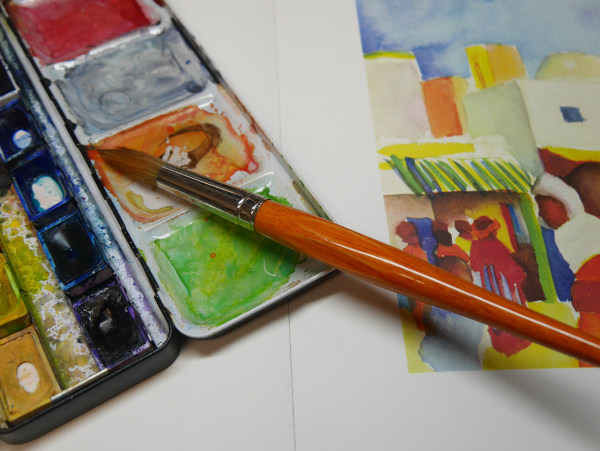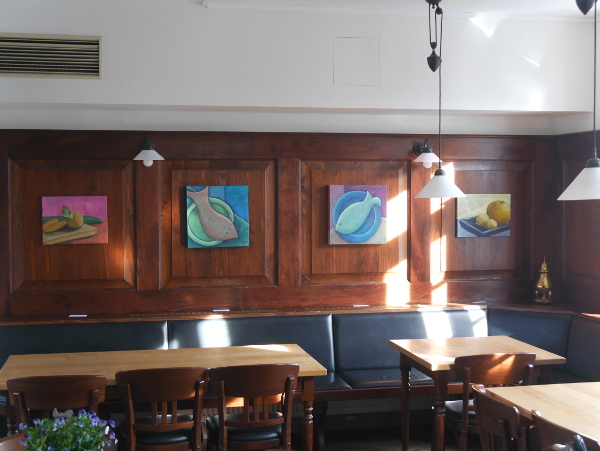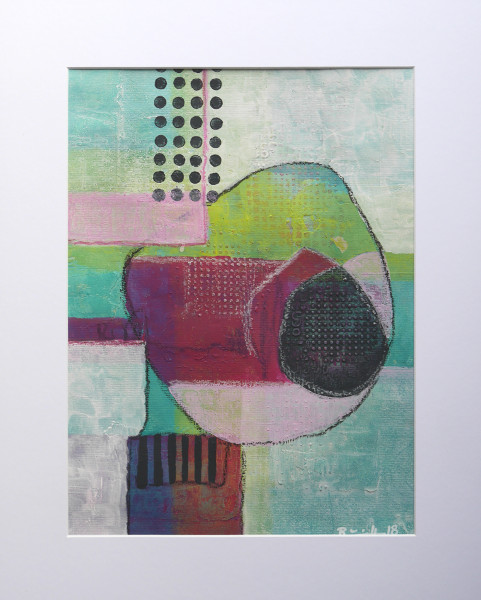“Bad artists copy, good artists steal.” – “Schlechte Künstler kopieren, gute Künstler stehlen.”
Ein Zitat, das Pablo Picasso zugeschrieben wird. Doch egal, ob es von ihm ist oder nicht, es lohnt darüber nachzudenken. Wo liegt in diesem Fall der Unterschied zwischen “kopieren” und “stehlen”? Und warum wird “stehlen” hier positiv gesehen?
Kopieren, Nachahmen ist eine natürliche Tätigkeit, wenn wir etwas lernen wollen. Kleine Kinder ahmen Erwachsene nach, lernen auf diese Weise, wie man einen Fuß vor den anderen setzt, wie man beim Essen einen Löffel hält, wie man Buchstaben aufs Papier malt oder Strichmännchen zeichnet.
Es gibt viele Kurse, in denen man Techniken lernt, indem man nachmacht, was die Lehrenden vormachen, indem man kopiert, was man gezeigt bekommt. So weit, so gut.
Ich habe vor vielen Jahren mal ein Aquarell von August Macke, eins von seiner Tunisreise, nachgemalt, weil meine Mutter es gerne im Wohnzimmer hängen haben wollte. Ein Foto davon als Vorlage, ein paar zarte Bleistiftstriche zur Orientierung, schnell hatte ich es kopiert. Nicht perfekt, aber erkennbar – und Mutti hat sich gefreut.
Ich mag die leuchtenden Farben von Mackes Aquarellen, mag die vereinfachten Formen von Gebäuden, Menschen, Pflanzen – etwas, das mir immer schwerfiel, weil ich mich in Details verlor. Indem ich also nicht einfach nur mechanisch kopiere, sondern mir überlege, was mich an einem Bild fasziniert, entdecke ich Elemente, die ich dann für meine eigenen Arbeiten nutzen kann. – Ich stehle!
Ist nicht jede Inspiration eine Art Diebstahl? Ich sehe etwas, das mich anspricht, das etwas in mir auslöst. Ich denke: So etwas möchte ich auch machen – und betrachte es genauer. Wenn ich verstehe, was genau mich berührt und warum, kann ich es als Startpunkt für den eigenen kreativen Prozess verwenden.
Und das ist das Entscheidende: Es muss mein Prozess sein, meine Arbeit, auch wenn der Anstoß von außen kommt.
Where do ideas come from (1): Inspiration or plagiarism?
“Bad artists copy, good artists steal.”
A quote attributed to Pablo Picasso. But whether it is from him or not, it is worth thinking about. In this case, what is the difference between “copying” and “stealing”? And why is “stealing” seen positively here?
Copying, imitating is a natural activity when we want to learn something. Small children imitate adults, in this way they learn how to put one foot in front of the other, how to hold a spoon while eating, how to draw letters on paper or how to draw stick figures.
There are many courses in which you learn techniques by imitating what the teachers do, by copying what you are shown. So far so good.
Many years ago I repainted a watercolor by August Macke, one from his trip to Tunis, because my mother wanted it to hang in the living room. A photo of it as a template, a few delicate pencil lines for orientation, I quickly copied it. Not perfect, but recognizable – and Mum was happy.
I like the bright colors of Macke’s watercolors, like the simplified shapes of buildings, people, plants – something that was always difficult for me because I got lost in details. So by not just copying mechanically, but thinking about what fascinates me about a painting, I discover elements that I can then use for my own work. – I steal!
Isn’t all inspiration some kind of theft? I see something that speaks to me, something that triggers something in me. I think: I would like to do something like that too – and take a closer look at it. When I understand what exactly affects me and why, I can use it as a starting point for my own creative process.
And that’s the bottom line: it has to be my process, my work, even if the impetus comes from outside.



